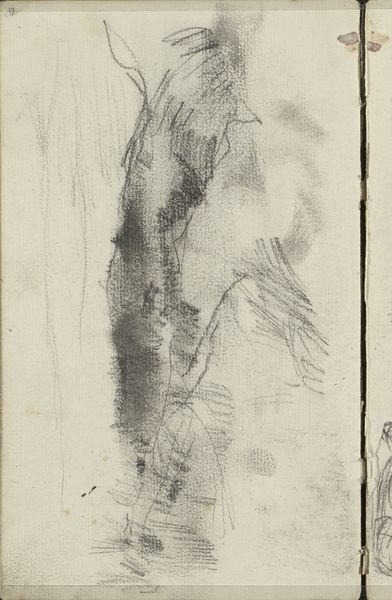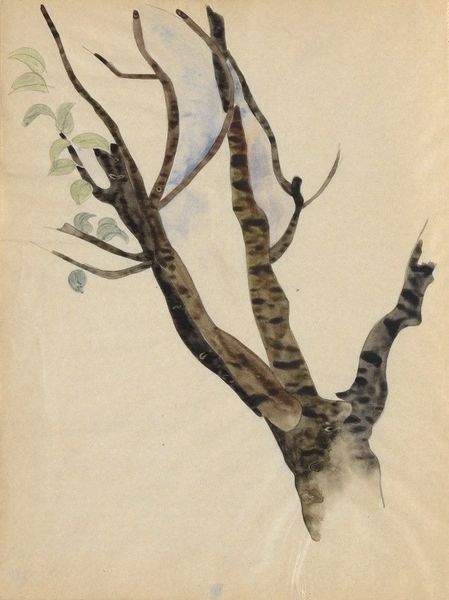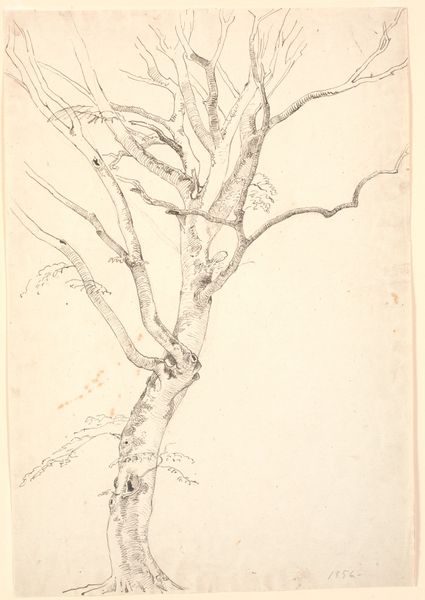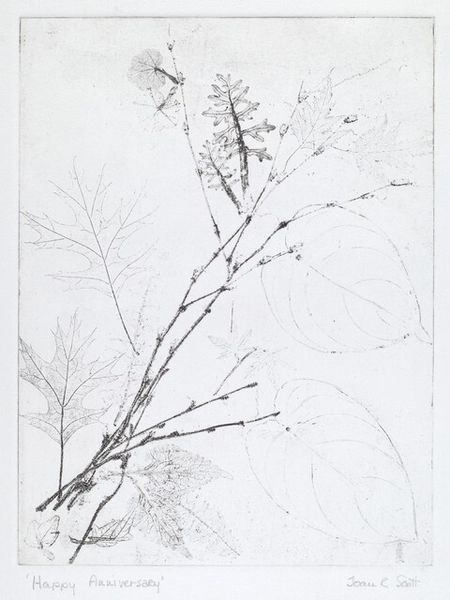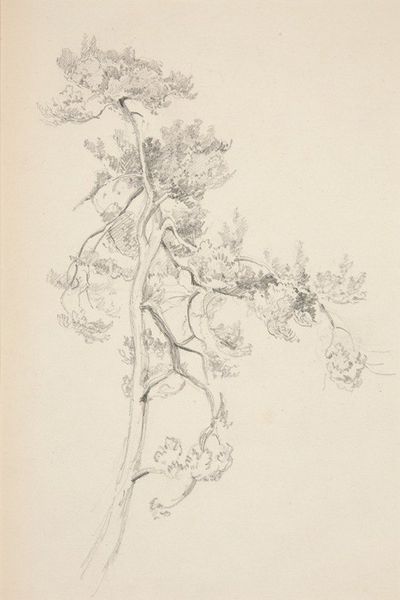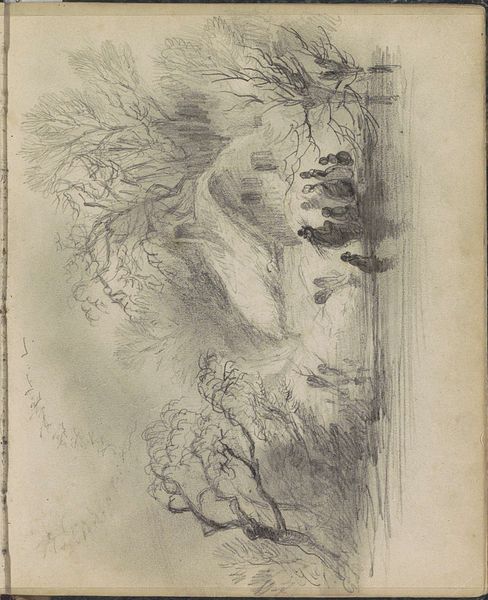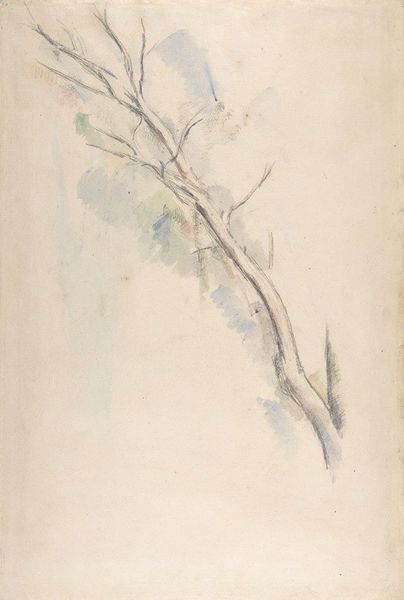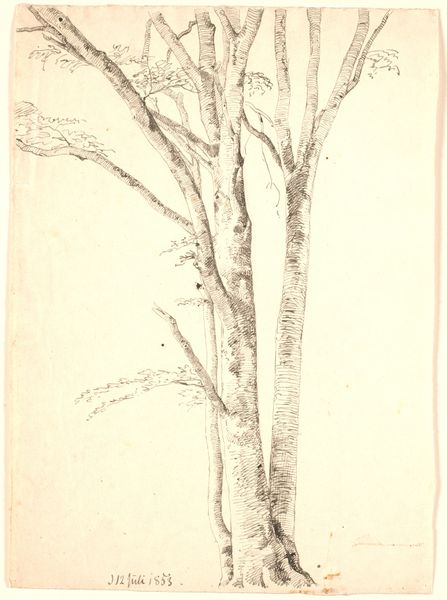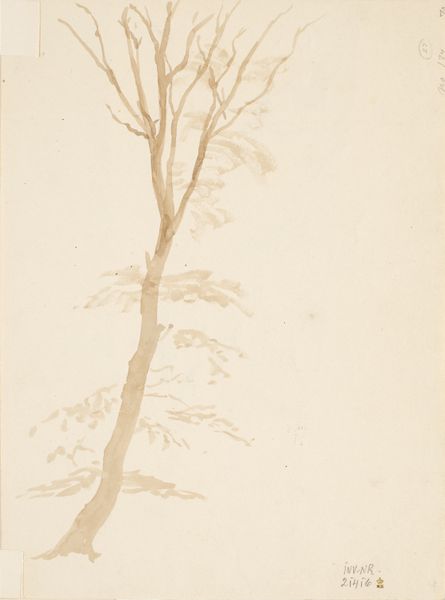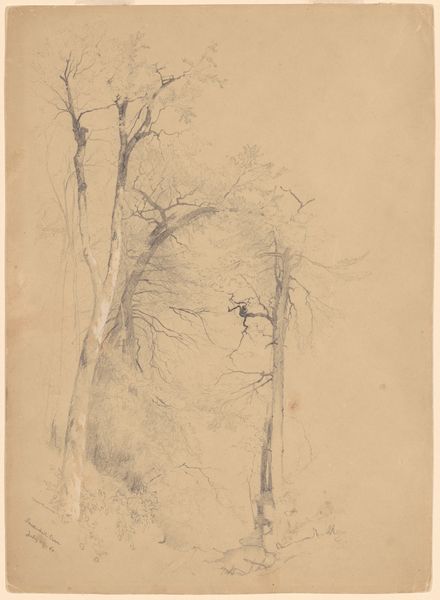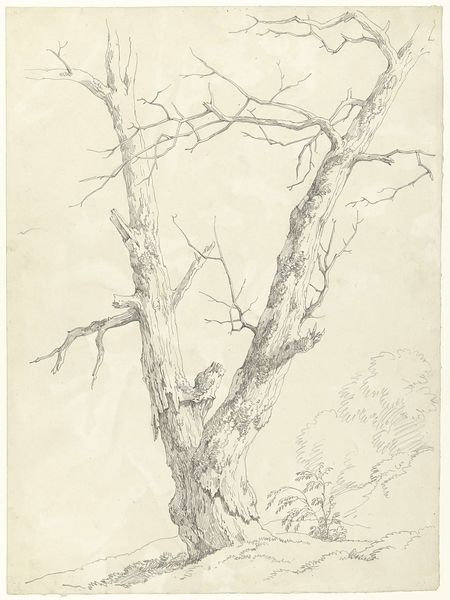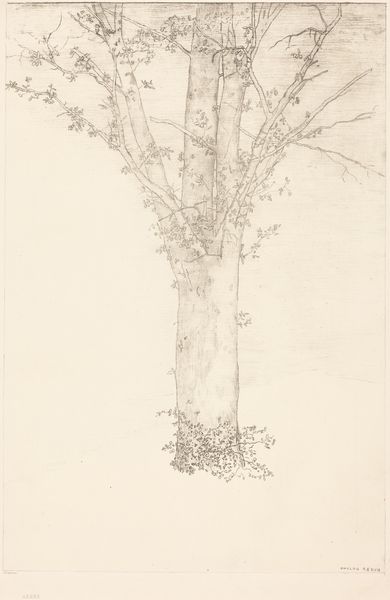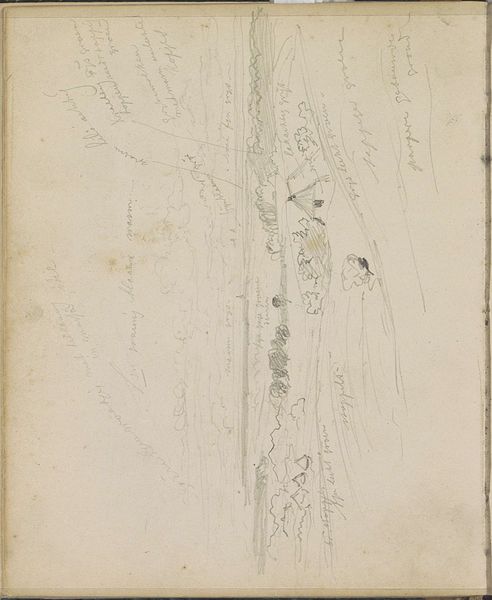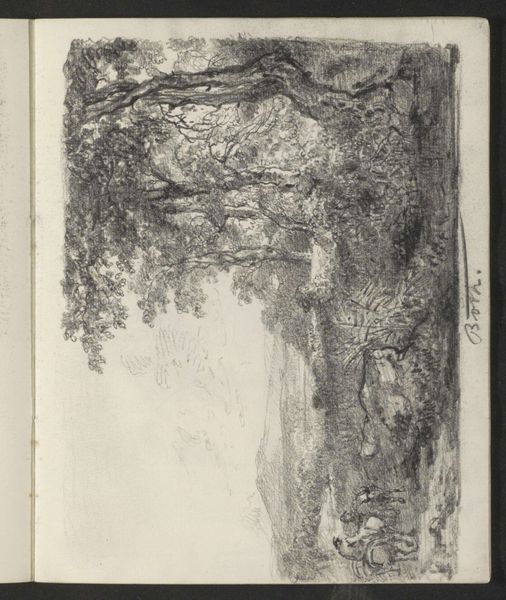
Copyright: Public domain
Curator: John Ruskin created this delicate pencil sketch, "Study of Trees from Turner," in 1857. Editor: It’s wispy, almost dreamlike. The upper parts are densely worked, but lower down it dissolves into nearly nothing. What’s most immediate for me is its fragility. Curator: Ruskin’s interest lay in accurately portraying nature's forms. He greatly admired Turner, and his “studies” served as a pedagogical tool to understand Turner’s techniques, as well as advocating for art education among the working classes. We can interpret it as part of the broader Victorian drive for social reform. Editor: Yes, but I think seeing it simply as pedagogical might be reductive. I'm interested in the materiality. Pencil on paper feels inherently accessible, democratic even. Look at the layered marks, the visible labor of building up tone and texture. How the pencil, a tool used for everyday writing and calculations, becomes an instrument for something sublime. Curator: Agreed, there's a democratic element inherent in the choice of materials. But think about the intended audience – aspiring artists, artisans... Were these educational opportunities equally available across class and gender lines? The Romantic ideal of "nature" itself has a history of being shaped by privilege and access to landscapes denied to many. Editor: Absolutely, access would've been limited by socio-economic conditions, that is undeniable. I just don’t think we can dismiss the intrinsic value that handmade processes have for communities, where skill, practice, and time invested carry economic and communal values far greater than any purely academic ones. Curator: And the tree itself... Trees appear so frequently in Romantic art. Here, their towering presence evokes themes of nature, spiritual solace, but also, thinking critically, reflects England's reliance on natural resources for industry and empire, even while Romanticism ostensibly pushed back against modernity. Editor: A balancing act of nature and labor… This makes me see Ruskin's work differently, recognizing how process and intention intersect, opening up new possibilities to examine assumptions surrounding materials, production, and historical context. Curator: Indeed. Examining artworks this way broadens the discussion, making it accessible, perhaps more socially conscious, without diminishing Ruskin’s own craftsmanship or intent.
Comments
No comments
Be the first to comment and join the conversation on the ultimate creative platform.
